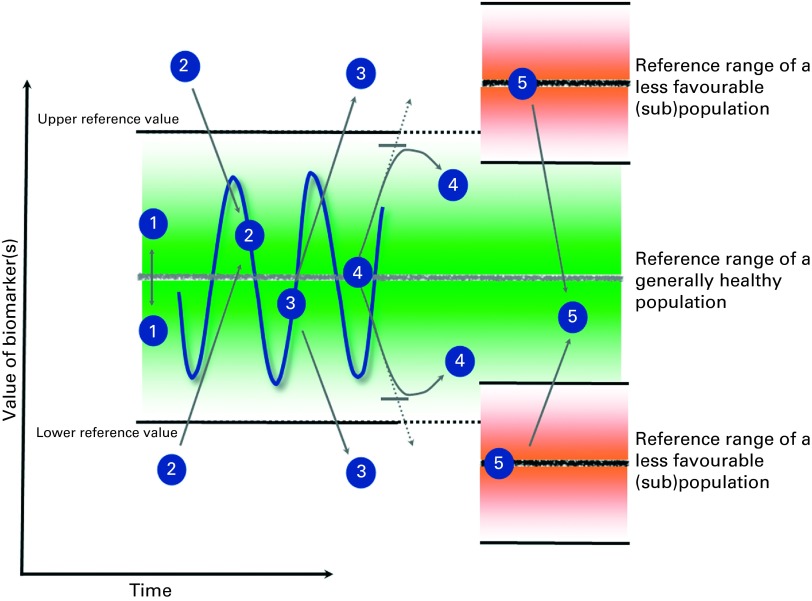Fig. 3.
Graphical representation of the five different scenarios for the modulation of immune function markers relative to the reference range. Scenario 1: statistically significant modulation within the reference range or within the range of a relevant control population, a very common scenario for modulation due to nutrition. Scenario 2: statistically significant modulation from outside the reference or control range of a relevant control population back into the range. Cases are different before intervention and become similar after intervention. Scenario 3: statistically significant modulation from within the reference or control range of a relevant control population out of the range. Cases are similar before intervention and become different after intervention. Scenario 4: nutritional prevention of statistically significant modulation induced by other endogenous or exogenous factors. Markers move out of the reference range of a relevant control population in the reference group, but this is prevented by nutrition in the intervention group (e.g. prevention of negative effects on the immune function of ageing or UV-B exposure or prevention of allergic sensitisation). Scenario 5: statistically significant modulation from a less favourable reference range to the reference range of a comparator group with a more desired immune function (e.g. from bottle-fed infants to breast-fed infants, elderly individuals to healthy adults, strenuous exercise to healthy controls, sleep deprivation to sleep sufficiency, etc.).

